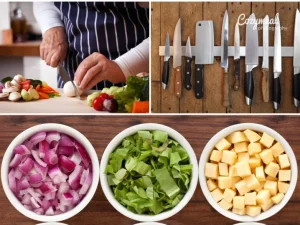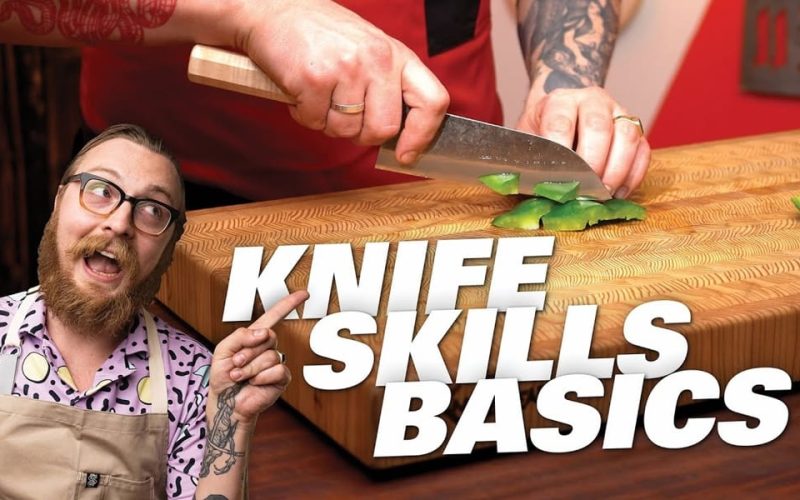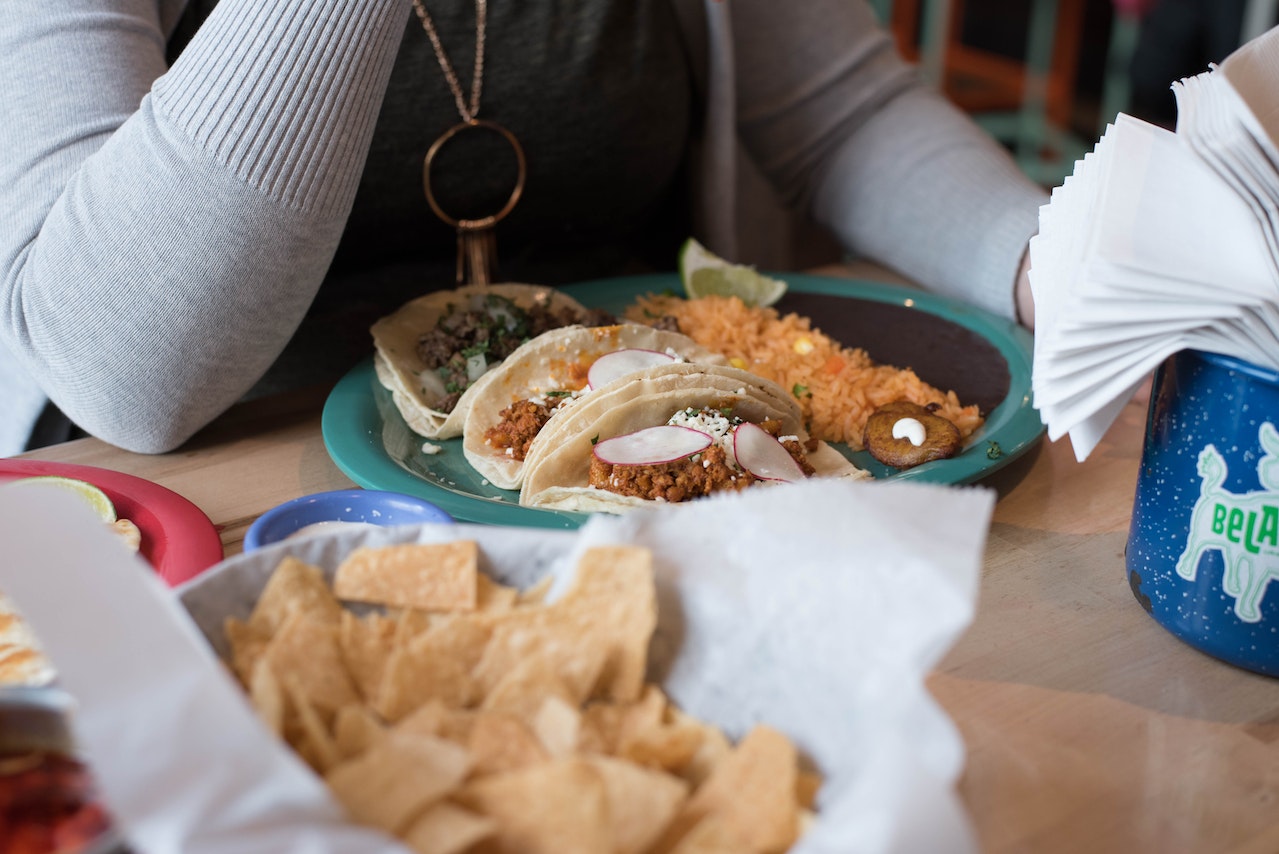Introduction
Whether you’re a home cook or a professional chef, mastering cutting board techniques is key to efficient and safe food prep techniques. The humble cutting board is more than just a surface—it’s the foundation for every chop, slice, and dice. With the right approach, you can speed up your prep work, protect your knives, and reduce accidents. In this guide, you’ll learn essential knife skills, board selection tips, maintenance practices, and safety strategies to transform your kitchen routine.
Choosing the Right Cutting Board
Not all boards are created equal. Your best options include:
- Wood: Gentle on knife edges and naturally antimicrobial. Ideal for vegetables and bread.
- Bamboo: Harder than wood, eco-friendly, and durable, but can dull blades faster.
- Plastic: Dishwasher-safe and color-coded for raw meats, produce, and fish to avoid cross-contamination.
- Composite: Made from resin and wood fibers, tough and low-maintenance, but pricier.
Select at least two boards—wood or bamboo for produce and plastic for raw proteins—to streamline both prep and cleanup.
Proper Board Placement and Stabilization
A wobbly cutting board is a safety hazard. To stabilize yours:
- Place a damp towel or non-slip mat under the board.
- Ensure the board sits flat, without rocking.
- If your board has feet or rubber grips, check them regularly for wear.
Stable boards let you focus on mastering knife skills rather than worrying about slips.
Knife Grip and Hand Positioning

Before cutting, establish a solid grip:
- Pinch Grip: Pinch the blade just above the handle between thumb and forefinger; wrap the rest of your fingers around the handle.
- Claw Grip: Tuck fingertips under and rest knuckles against the blade’s side to guide cuts and protect digits.
This combination of grips gives you control and precision for all cutting board techniques.
Essential Knife Cuts
- Chopping: Quick, rough-cut for herbs or onions. Keep tip on the board and rock blade up and down.
- Dicing: Cut food into uniform cubes. Start with slices, then stack and slice again crosswise.
- Julienne: Matchstick strips, perfect for stir-fries. Slice into thin planks, then stack and cut into sticks.
- Mince: Very fine pieces for garlic or herbs. Gather slices and rock the blade over the pile until minced.
- Brunoise: Tiny dice (about 1⁄8 inch), used for delicate garnishes. Follow julienne steps and dice into small cubes.
Practicing these cuts enhances speed and consistency in your food prep techniques.
Maintaining Your Cutting Board
A well-cared-for board lasts years:
- Wood & Bamboo: Hand-wash with mild soap and warm water. Never soak. Dry upright. Every month, rub with food-grade mineral oil to prevent cracking and warping.
- Plastic & Composite: Dishwasher-safe, but avoid high-heat cycles that can warp the board. Inspect for deep grooves; replace if cleaning won’t remove bacteria.
Regular maintenance keeps boards sanitary and extends their life.
Cleaning and Sanitation Best Practices
To prevent cross-contamination:
- Clean Immediately: Wash boards right after use, especially after raw meat and fish.
- Sanitize: For wood boards, spray a solution of one tablespoon bleach per gallon of water. For plastic, soak in a similar solution or run through the dishwasher.
- Dry Thoroughly: Air-dry boards upright to avoid moisture buildup and mold.
Consistent cleaning is a critical step in cutting board techniques for safety.
Organizing Your Workspace
A tidy station improves efficiency:
- Prep Stations: Dedicate areas for veggies, proteins, and garnishes with separate boards.
- Tool Placement: Keep knives, bench scrapers, and trash bowls within arm’s reach.
- Batch Prep: Slice all vegetables at once, then move to proteins. This flow minimizes board swaps and reduces cleanup.
Good organization supports faster, safer cooking.
Storing and Replacing Cutting Boards
Store boards upright or on a rack to ensure airflow and prevent warping. Inspect boards monthly for deep cuts or cracks—these can harbor bacteria and compromise safety. Replace wood boards when large grooves form; plastic boards should be replaced once heavily scored. Regular replacement is part of mastering cutting board techniques for a hygienic kitchen.
Advanced Tips for Pros
- Edge Sharpening: A sharp blade requires less force, reducing slips. Hone daily and sharpen monthly.
- Dual-Sided Boards: Use one side for prep and the other for serving charcuterie or cheese to reduce board count.
- Integrated Features: Some boards offer juice grooves for meats or lift handles for easy transfer from board to pan.
These advanced hacks add polish and professionalism to your prep routine.
Conclusion
Mastering cutting board techniques transforms your kitchen into a place of safety, speed, and precision. By choosing the right boards, stabilizing your workspace, and practicing essential knife skills—from chopping to brunoise—you’ll streamline food prep techniques and protect both the blade and your fingers. Regular cleaning, board maintenance, and organization further enhance efficiency and hygiene. With these practices in hand, you’ll cook with confidence, speed, and flair—ready to tackle any recipe that comes your way. Practice daily, invest in quality tools, and watch your kitchen skills soar!










